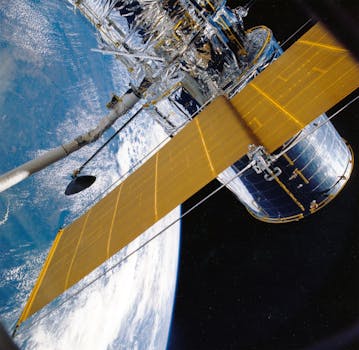
The Future of Satellites: Revolutionizing Global Connectivity
The future of satellites is rapidly evolving, with advancements in space technology and increasing demand for global connectivity. Satellites have been a crucial part of modern communication systems, providing internet access, navigation, and weather forecasting services. As the world becomes increasingly dependent on satellite technology, the industry is witnessing significant transformations, driven by innovations in launch systems, satellite design, and ground infrastructure.
Advancements in Launch Systems
One of the most significant advancements in the satellite industry is the development of reusable launch systems. Companies like SpaceX and Blue Origin are pioneering reusable rockets, which can significantly reduce the cost of launching satellites into space. This innovation has made it possible for satellite operators to launch more satellites, increasing the overall capacity and coverage of satellite constellations. Reusable launch systems have also enabled the launch of smaller satellites, known as CubeSats, which are being used for a variety of applications, including Earth observation, communication, and scientific research.
Satellite Design and Technology
Satellite design and technology are also undergoing significant transformations. The development of electric propulsion systems, for example, has enabled satellites to extend their mission lifespan and reduce their mass. This has led to the creation of smaller, more efficient satellites that can be launched at a lower cost. Additionally, advancements in materials science have enabled the development of lighter, more durable satellite components, which can withstand the harsh conditions of space. The use of artificial intelligence and machine learning is also becoming increasingly prevalent in satellite technology, enabling satellites to operate more autonomously and make decisions in real-time.
Ground Infrastructure and Satellite Constellations
Ground infrastructure is also playing a critical role in the evolution of the satellite industry. The development of satellite constellations, which involve multiple satellites working together to provide global coverage, requires advanced ground infrastructure to manage and control the satellites. Companies like Amazon and Microsoft are investing heavily in ground infrastructure, including the development of new satellite gateways and network operations centers. Satellite constellations are being used for a variety of applications, including broadband internet, maritime connectivity, and Earth observation.
Challenges and Opportunities
Despite the many advancements in the satellite industry, there are still several challenges that need to be addressed. One of the most significant challenges is the issue of space debris, which poses a significant risk to operational satellites and the environment. The development of sustainable launch systems and responsible satellite operations is critical to mitigating this risk. The satellite industry also faces regulatory challenges, as governments and international organizations work to develop frameworks for the governance of space activities. However, these challenges also present opportunities for innovation and growth, as companies and organizations work to develop new technologies and business models that can address these challenges.